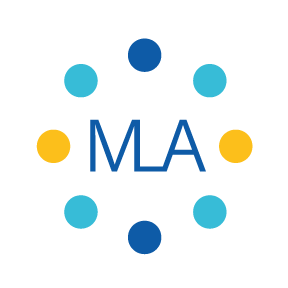By Michael Cortrite, Ph.D.
•
22 Mar, 2024
Peter Drucker, throughout his long and distinguished career, advocated for the rights and well-being of all people. Drucker wanted all people to have respect, dignity, a meaningful place in society, and a degree of autonomy. Drucker also made sure to tell managers that even though caring for people is important, productivity and success are essential to the longevity of organizations (Murphy 2023). According to Drucker successful entrepreneurs have a commitment to the successful practice of innovation and, in fact, innovation is the specific foundation of entrepreneurship. He believed that innovation is not so much about genius, but finding and taking advantage of opportunities for innovation (Drucker 2013 p.156). Friesen uses the Drucker quote, “Stressing output is the key to increasing productivity while looking to increase activity can result in just the opposite.", to point out Drucker’s belief that successful organizations are innovative and productive. Drucker defines entrepreneurship, not just in terms of small or start-up businesses, but as “any business that engages in innovation. Innovation is defined as “the effort to create purposeful, focused change in an enterprise’s economic or social potential.” (Drucker 2013 p.143). In other words, innovation is change to create better results. One might say that Drucker thinks of innovation and entrepreneurship as synonymous. In his essay titled, The Discipline of Innovation (Drucker 2013), Drucker says that most successful innovations result from a conscious, purposeful search for innovation opportunities, Drucker lists seven areas of opportunity that exist within a company or industry. They are: 1. Unexpected occurrences 2. Incongruencies 3. Process needs 4. Industry and market changes 5. Demographic changes 6. Changes in perception 7. New knowledge An example of unexpected occurrences is when IBM developed the first modern accounting machine in the early 1930s. It was designed with banks in mind, but banks were not buying new equipment at the time. Fortunately, the New York Public Library bought one of the machines. This led to more than 100 machines being sold to other libraries. Instead of IBM losing money, they became even more successful. Drucker cites other examples of unexpected occurrences that led to successful innovations. Drucker suggests that organizations focus their monthly and quarterly reports as much on problems that arise as on potential opportunities because problems or mistakes can turn into profitable innovations. One of the examples Drucker recounts to show his second area of opportunity, incongruities, is the shipping industry using ocean freighters. Drucker explains that for the first part of the twentieth century shipbuilders and shipping companies kept trying to boost their sagging profits by looking at what turned out to be two incongruous ideas—either making ships faster or making them more fuel efficient. If they made ships faster, then fuel costs skyrocketed. If they made them more fuel efficient, it took too long for them to arrive at their destination. They finally realized that ships sitting idle in ports being loaded or unloaded by hand was a large waste of money. They started using roll-on roll-off containers that truckers and railroads had been using for 30 years. This innovation solved their money problem. Drucker’s third opportunity for innovation, process needs, is explained by using the example of what we call “the media.” Two innovations were used to create the innovation of the modern media. The first was the linotype, which made it possible to produce newspapers quickly and in large volume. The second was that newspaper publishers Adolph Ochs, Joseph Pulitzer, and William Randolph Hearst started selling advertising in their papers. These two innovations combined so that news could be widely distributed almost free of charge. To explain Industry and market changes, Drucker points out that even though change is usually disliked, change happens and often things change overnight. And these changes can be opportunities for innovation. The brokerage firm Donaldson, Lufkin, and Jenrette (All Harvard graduates) was started in 1960. They discovered that things were changing in the financial industry—institutional investors were rapidly becoming dominant. They started the concept of negotiated commissions and quickly became one of Wall Street’s stellar performers. Demographic Changes. The Japanese lead the world in robotics because they pay attention to demographics. Around 1970 everyone in the developed world knew that there was both a baby bust and an education explosion going on. About half of the young people were staying in school past high school. Consequently, the number of people available for blue-collar work in manufacturing was bound to decrease and become inadequate by 1990. The Japanese were ready with the answer to this problem. It was robotics and Japan had a large head start on the rest of the world in this area. Drucker uses the examples of “The glass is half full” and “The glass is half empty” to introduce changes in perceptions since these two similar statements have vastly different meanings. Drucker points out that Americans’ health has never been better. But for some reason, Americans seem to be suddenly obsessed with it. They want healthcare magazines, health foods, home exercise equipment, and gym memberships. And even though the crime rate is the lowest it has been in 40 years; Americans are buying up the latest alarms and home surveillance systems. And entrepreneurs are taking advantage of, not facts, but perceptions that crime is a problem. New knowledge innovation is what people generally think of as innovation. It’s big, useful, and important stuff, but Drucker says there is a protracted span (somewhere around 50 years) between emerging new knowledge and when it becomes usable technology. For example, some of the knowledge that was ultimately used to create modern banking goes back to the era of Napoleon. The same can be said of the innovation of computers. For example, the precursor of the modern computer, the punch card, was invented in 1890. Conclusion Peter Drucker has often been described as “prescient” and “decades ahead of his time.” (Ambachtsheer 2005). Drucker’s work on innovation, management by objectives, entrepreneurship, and results is another example of Drucker’s work staying relevant and of his ability to foresee the future. A new leadership model, Objectives and Key Results (OKR) is described by Keryn Gold in the July 2023 issue of Leadership Excellence. This model was created by Andy Grove of Intel and has been adopted by organizations including Netflix, Amazon, Facebook, Adobe, and Linkedin. It links, among other things, clarity, innovation, empowerment, and employee engagement to success (Gold 2023). In the book Measure What Matters, John Doerr writes about “MBOs,” or Management by Objectives. MBOs were the brainchild of Peter Drucker and provided Andy Grove a basis for his eventual theory of OKRs. In fact, Grove’s name for them originally was “iMBOs,” for Intel Management by Objectives (Doerr 2018). References: Ambachtsheer, Keith. The Unseen Revolution. Pensions and Investments Vol. 33 Iss. 24 p.12 2005 Doerr, John. Measure What Matters: How Google, Bono, and The Gates Foundation Rock The world with OKRs 2018 Drucker, Peter. The Discipline of Innovation Chapter in On Innovation, Harvard Business Review 2013 Friesen, Wes. Measure What Matters Business Credit, Volume 125 Issue 8 (Sept. 2023) Gold, Keryn. OKR Best Practices That Promote a Culture of Empowerment and Innovation Leadership Excellence. Vol. 40, Issue 7 July 2023 Murphy, Glenn. Delivering on Drucker’s Call to Action. Strategic Finance, Volume 104, Issue 7 Jan. 2023







